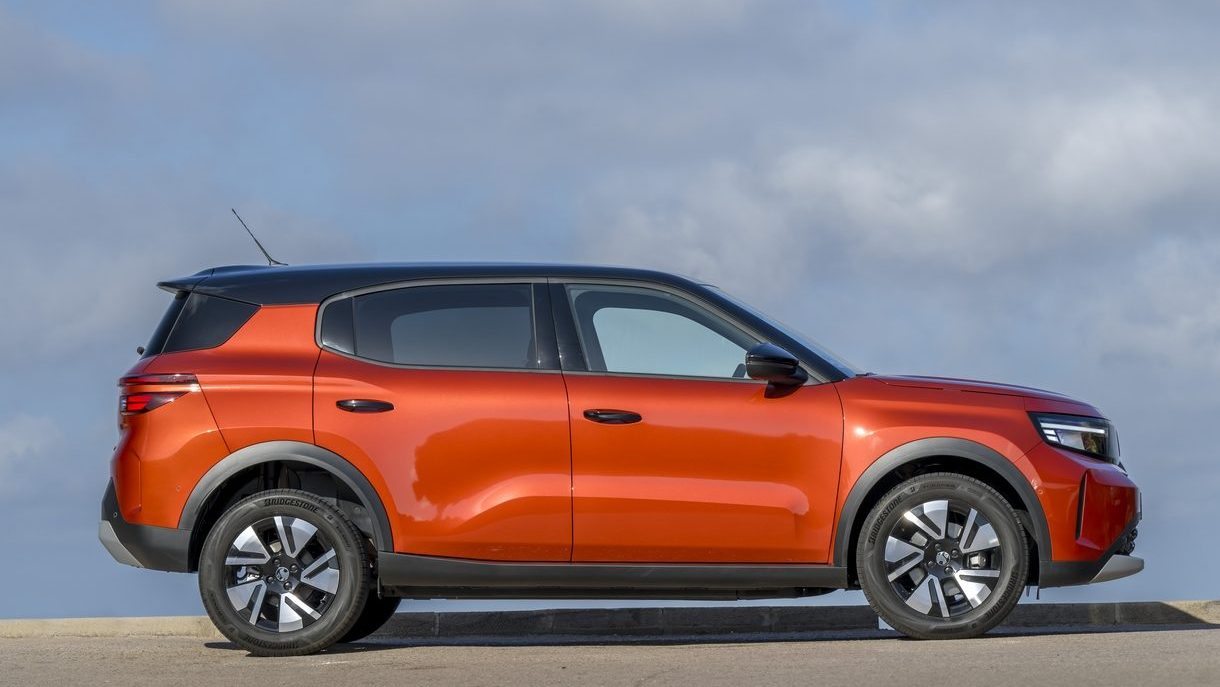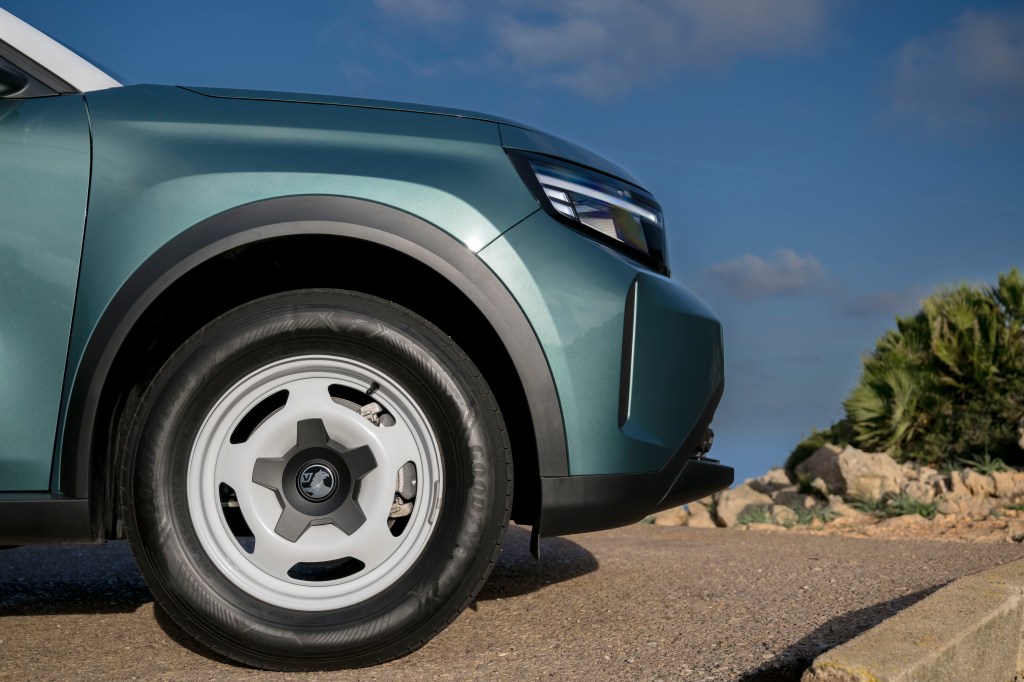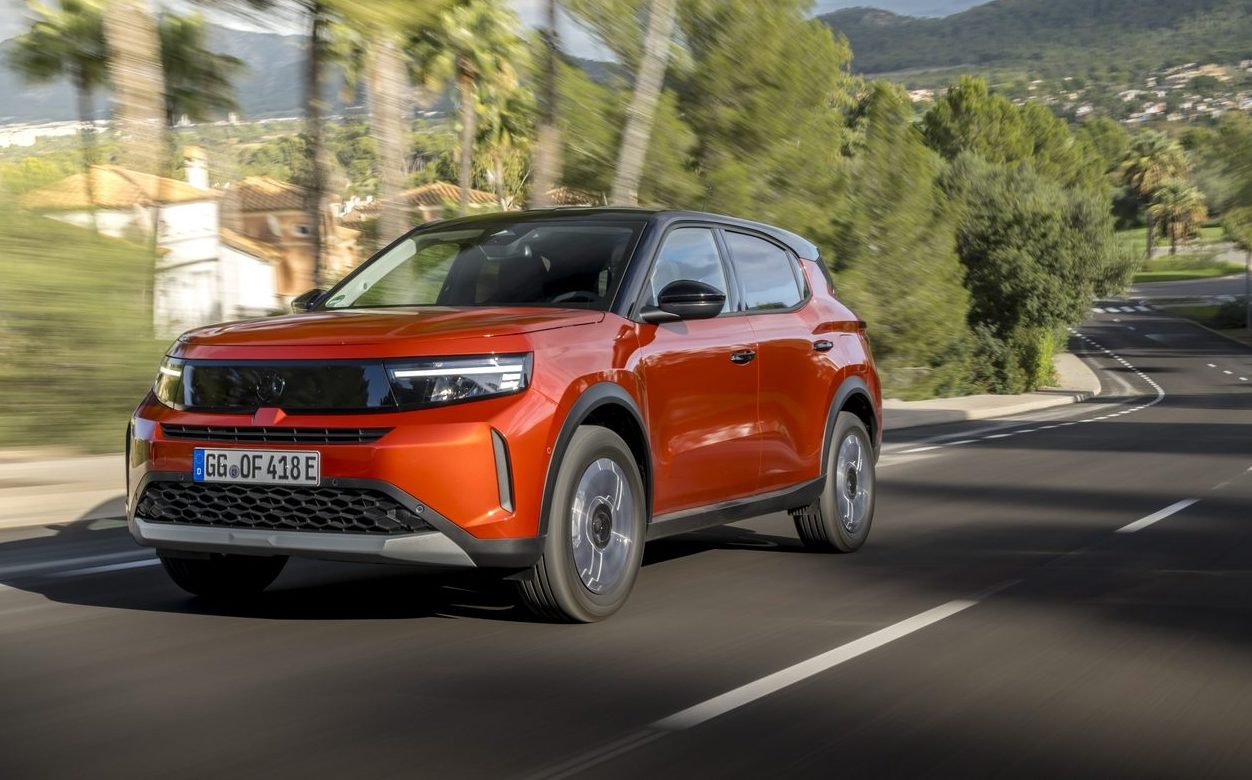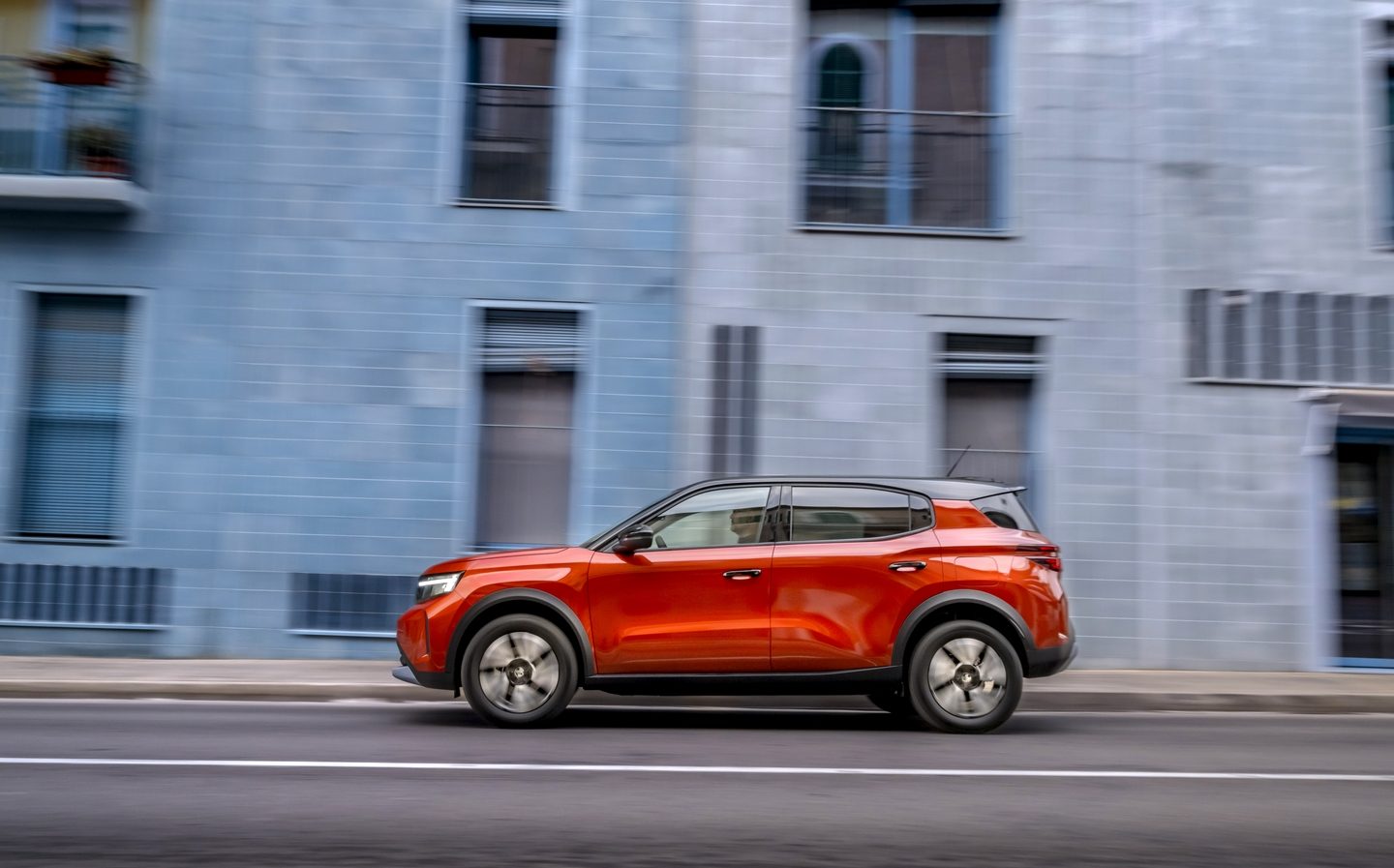Vauxhall Frontera 2024 review: Old badge resurrected for budget Dacia Jogger rival
Electric version gets same bargain price as the hybrid
Vauxhall has for decades now been kind of predictable. Even though all of its cars are essentially re-badged Opels, Vauxhall has carved out a pretty successful niche for itself in Britain as a motoring safe bet. Whether under ownership by General Motors, PSA or, since 2021, Stellantis, it’s a brand that makes solid, sensible, occasionally anonymous cars for people who just want transport.
There have been the occasional VXR-badged high points, where Vauxhall peered over the parapet of driving entertainment, but for the most part it’s been lower-middle class sensibleness all the way down the line.
Which is why the new Frontera is a bit of a surprise. It’s not really a surprise that it’s called Frontera — reviving long-dead badges from the 1980s and 1990s is quite the sport among car companies right now, as brands like Ford and Renault delve heavily into their heritage in an attempt to see off the onslaught of unfamiliar Chinese firms. But it’s immediately obvious that the old and new Fronteras have nothing in common except a name and a vaguely SUV-like shape.
That original Frontera of the 1990s (below) was Vauxhall’s first ever stab at a 4×4, and it was basically an Isuzu with Vauxhall badges thanks to the convoluted corporate links of then being part of GM.

Now, as part of Stellantis, there’s a close under-the-skin relationship between this Frontera and the Citroën C3 Aircross as well as the forthcoming Fiat Grande Panda.
Actually, the relationship is pretty obvious on top of the skin, too. While the Frontera gets a black-panel wraparound “visor” grille at the front, in common with the rest of the Vauxhall lineup, the sides and rear are obviously shared with the Citroën.

As with the Citroën, the new Frontera’s rear styling is awkward, looking like the back of an SUV has been tacked onto a hatchback body like a badly judged house extension.
One high point, though, is that the basic-spec models come on simple steel wheels, painted white, almost like those of the entry-level Land Rover Defender. These look more pleasing to our eyes than the optional 17in alloys.

Underneath, the Frontera rides on the Stellantis group’s new “Smart Car” platform (nothing to do with Smart itself, obviously, leaving one to wonder if the lawyers have had anything to say about it), which is designed to be cheap to build and able to take electric or hybrid power.
For now, the electric version comes with a fairly small 44kWh lithium-iron phosphate battery. These are less energy-dense than the more high-tech lithium-ion batteries, but also cheaper to make and more robust. It provides enough energy to propel the Frontera Electric for an official 189 miles over a mix of roads (likely less in the real world, depending on conditions).
There will be a bigger-battery model in due course, with a range of around 250 miles, but if neither are quite long-legged enough for you there’s also a 1.2-litre petrol-electric hybrid, which comes in 98bhp and 134bhp forms.

All of which seems very familiar if you glance across the rest of the Stellantis group brands — Peugeot, Citroën, Fiat, Alfa Romeo, Jeep, Abarth and so on — all of which are playing similar electric and hybrid tunes.
What’s surprising about the Frontera is that it’s very much a downmarket car for a brand which, with the likes of the new electric and hybrid Grandland, seemed to have been trying to move upmarket of late, to occupy some of the same hills on which Volkswagen has pitched camp.
By contrast, the Frontera is aimed at the likes of Dacia, and although it’s rather pricier in its basic from than Dacia’s brilliant seven-seat Jogger, the overall aim is pretty much the same — take a compact hatchback model (in this case the Citroën C3) and stretch it out until it becomes a family-friendly crossover with seats for seven.
Not all Fronteras will have three rows of seats, mind you; that will be an option for the hybrid model and not available at all for the pure-electric Frontera. Vauxhall didn’t provide us with a seven-seater to try out, which seems to suggest that space in the back seats will be very tight. No doubt the PR folk didn’t fancy having corpulent or especially tall motoring journalists writing about how they had to be levered out of the vehicle.
Indeed, looking at the 460-litre boot, it certainly doesn’t look as if any seats shoved in there would have space for anyone over the age of 10.

At least the boot itself is practical, with a flat loading lip and adjustable boot floor, and almost a metre of load height between that floor and the ceiling. Fold down the back seats and there’s 1,600 litres of space to play with, although you’ll have to sacrifice a bit of that by moving the boot floor upwards if you want a flat surface all the way.
The roof can also cope with a static weight of up to 240kg, so you can lob a roof-tent up there for camping if you like.
Those second-row seats are roomy when you click them back up. There’s plenty of legroom and headroom, and big side windows out of which to watch the world roll past. The seats are also firm and supportive, and there’s more space than you get in the middle row of a Dacia Jogger, although the Frontera’s general narrowness means that the middle rear seat will only be of interest to the narrow-shouldered.

Still, Vauxhall hasn’t left things totally plain back there. As well as handy seat-back pockets, there are smaller pouches — for phones and earbuds — set high up by the headrests of the front seats, and a pair of USB-C outlets too.
Up front, there’s some surprising sophistication, with two big ten-inch digital screens for infotainment and instruments, and a sense of decent quality even amid the wall-to-wall cheap plastics. In Europe, basic Fronteras do away with the central infotainment screen and instead — taking clear inspiration from Dacia — use a mobile phone clamp and an app so that your smartphone becomes your car’s touchscreen.
In the UK, though, all models will get the infotainment screen and, given how fiddly the built-in screen’s menu layout is, the clamp might be the better option. At least Vauxhall saw sense and has persisted with physical buttons for air conditioning controls.

The Frontera’s seats are good in the front, too. Vauxhall makes lofty claims about how their design reduces fatigue by 15 per cent, although no-one was able to say how this is measured nor what it’s 15 per cent less than. Still, like the seats in the back, the ones upfront are firm and comfortable and nicely supportive.
The driver’s seat adjusts for height (the passenger’s doesn’t, which is unwelcome news for taller people), and the steering wheel adjusts for reach and rake, so it’s easy to get comfortable. The three-spoke steering wheel gets some physical buttons for the stereo and cruise control functions, but these are a bit fiddly to use.
There are plenty of storage spaces dotted around the cabin, although none of them are especially large. There is a neat fabric strap that surrounds the cupholders which allows this space to be used for larger items such as a laptop or tablet, and the Frontera exudes a feeling of general practicality and utility.
Down on the centre console there’s a toggle switch for drive selection, which includes a “C” button that eases off the regenerative braking (recovering energy to the battery while slowing down).
The electric motor produces just 111bhp and 91lb ft of torque, so performance is never going to be (forgive me) electric. In fact, with a 0-62mph time of 12.1 seconds, this Frontera Electric is some 3.1 seconds slower than the 1.2 hybrid version. The top speed is a mere 86mph.

So, it’s leisurely, but it’s not entirely bereft of performance. As long as you’re not looking to win any traffic light grands prix, the Frontera feels entirely adequate in its performance and the range seems to hold up, too — having started our test route with 189 miles showing on the dashboard, we got back again after three hours of driving up and down the mountainous roads of Mallorca with 100 miles still remaining. Not bad, really.
Also not bad, not bad at all, is the way the Frontera drives. It’s very smooth, with the relatively soft suspension easily soaking up the bumps and lumps that we encountered. It’s especially good at coping with speed ramps, so for urban driving the Frontera is a good bet, helped by its relative narrowness, which makes it much easy to park.

Although the Frontera’s platform is shared across the Stellantis group, Vauxhall’s engineers swear that they were in on its development from the start, and so were able to give the Frontera steering a bit more weight and life to it, and that does seem to have worked. It’s no sports car, and nor would you expect it to be, but the Frontera coped well with all those twisting mountain roads, and while it’s not a car about which to get especially excited, neither does it feel entirely built down to a price, even if it’s never exactly tricky to spot the cheapness.
That price — starting from £23,495 for both the electric and hybrid models — is a bit higher than what Dacia asks for a Jogger, but then the Jogger can’t be had with pure-electric power, and the hybrid model is priced much closer to the Frontera. It’s also great to have more sub-£30,000 EVs hitting the market.
In general, the Frontera feels a little more well-finished and more refined than the Dacia, but then the Jogger does come with seven seats as standard, and it’s roomier by far in the boot.

Still, considering what an awful old thing the original Frontera was, the new one marks a significant improvement, and it’s a far nicer car than the Vauxhall Crossland, which the Frontera effectively replaces.
It’s cheap, fairly cheerful and better to drive than you might expect, but the limited battery range (until the 250-mile version arrives) and the price gap to the Dacia Jogger could work against it.
Related articles
- If you were interested in our review of the Vauxhall Frontera, you may like to read our review of the updated Vauxhall Corsa Electric
- Also check out our first drive review of the electric Vauxhall Astra Sports Tourer
- And did you know Vauxhall is planning a £22,000 city EV?
Latest articles
- Porsche 911 Carrera S 2025 review: Harder, better and faster – but is it the best 911?
- F1 2025 calendar and race reports: The new Formula One season as it happens
- Seven great automotive events to visit this summer, from F1 to art and champagne
- Watch new Porsche 911 GT3 smash Nürburgring record for manual cars
- Skoda Elroq 2025 review: Czech carmaker can’t seem to miss with its electric family cars
- Five best electric cars to buy in 2025
- Should I buy a diesel car in 2025?
- Zeekr 7X AWD 2025 review: A fast, spacious and high tech premium SUV — but someone call the chassis chief
- Denza Z9GT 2025 review: Flawed but sleek 1,062bhp shooting brake from BYD’s luxury arm





















